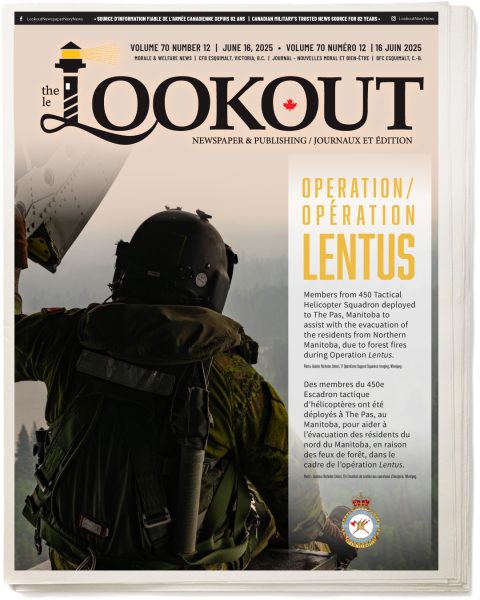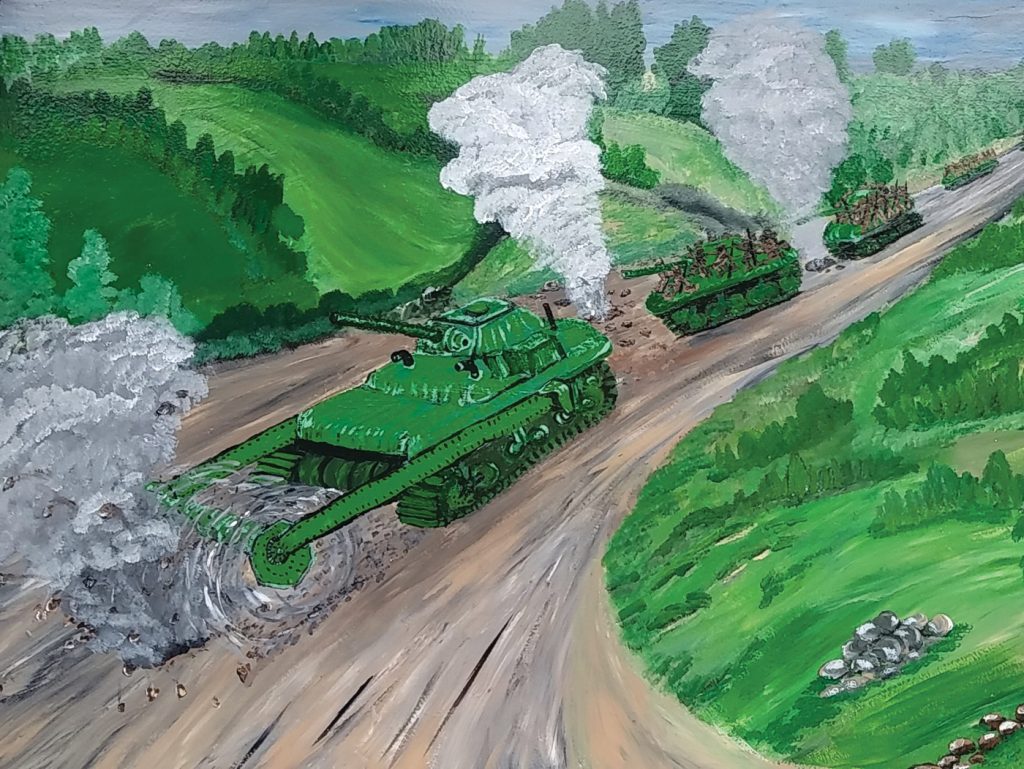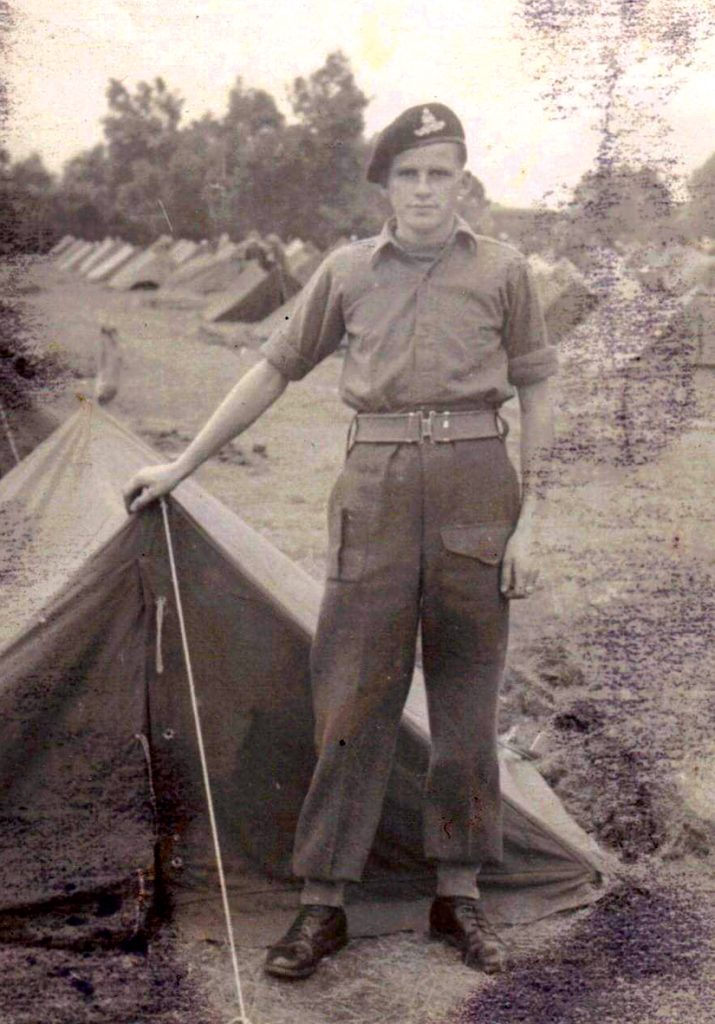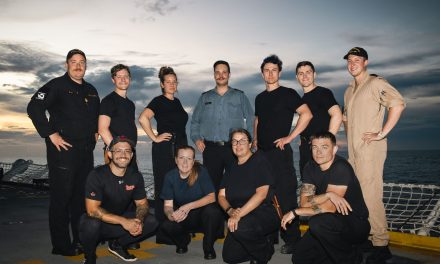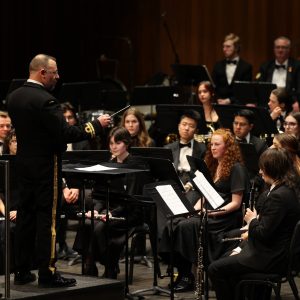Peter Mallett
Staff Writer
––
An art project by a Second World War veteran and his daughter retraces the heroic steps of Canada’s Perth Regiment through Europe.
Former Infantryman Eugene McKinnon, 98, has transformed his wartime memories into window murals with the help of his daughter Catherine.
The project began in June 2020 and was completed in August with their installation on 11 exterior windows of the Royal Canadian Legion’s Coronation Branch 286 in Toronto’s Rexdale neighbourhood.
“For me, art is very enjoyable and educational. It allows me to teach people about the hardships of war and that many people like me had no choice but to enlist or be conscripted.”
He was born Sept. 9, 1922, in Mill Village, Queens County, N.S., and was the fourth in a family of 13 children.
As the Second World War raged, and he and his four brothers became of legal age, they all enlisted in the army. He had no time for art during the war, but the memories are heavily entrenched in what he paints.
His fondest memories of that time were VE Day and anything and everything afterwards, he says.
“That was the day we finally got to come home to our families and forget about the horrors we saw.”
Remembering ‘The Perths’
McKinnon was part of the Perth Regiment, Fifth Armored Division that sailed out of Halifax on the troop ship Queen Elizabeth. They arrived at the United Kingdom on Nov. 22, 1941. The Perths were mobilized under the code name Exercise Timberwolf and would spend the next two years in England in intensive training.
His regiment landed in Italy on Nov. 8, 1943, as part of the 11th Infantry Brigade, 5th Canadian Armoured Division.
During their 16-month campaign in Italy, the successes of the Perths mounted, such as being the first regiment to crack The Gothic Line and winning campaigns at the Liri Valley and the Battle of Monte Casino. Their mission eventually disrupted the German’s hold on the Italian capital.
In March 1945, the Perths were deployed to France, Belgium, and the Netherlands for the remainder of the war.
He remembers how they travelled mostly by foot and how he was often called on to take part in dangerous reconnaissance missions where small teams of Perths would scout out enemy positions.
“A couple of times he was the only one who would return,” says Catherine. “Like many other men who had seen horrific things during military service, Dad didn’t talk about the war until later in life.”
Embracing Art
Post-war, he painted his first mural while working on the tugboats of St. John’s Drydock and Shipbuilding Co. The crew had bunks on the tugboat and McKinnon painted a mural of a tiger above his bunk, which, he says, helped boost the morale for him and his bunkmates.
It was also during this time that he met his wife Jacqueline Barbara Turner. They married and moved to Ontario where they had seven children. He landed a job at Canadian Gypsun Company Ltd.
Following his retirement and the death of his wife in 2016, he began to paint more frequently.
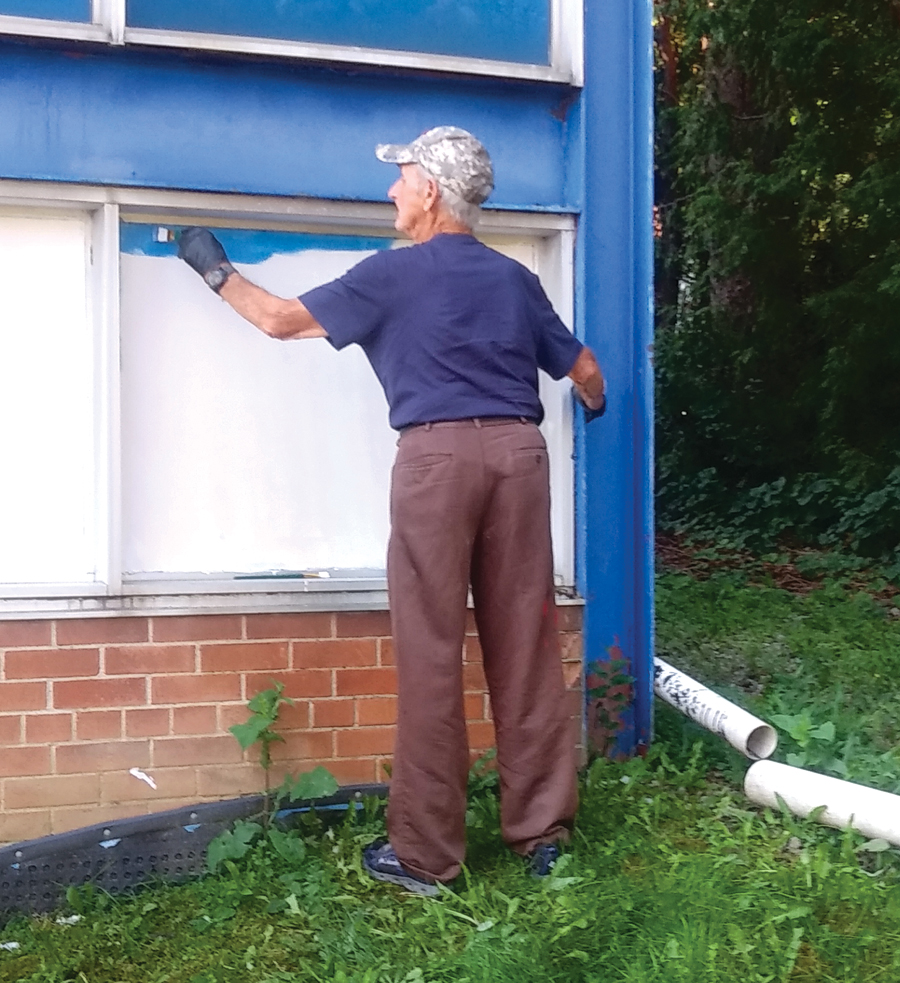
Eugene McKinnon paints some of the exterior windows of the Royal Canadian Legion’s Coronation Branch 286. McKinnon, 98, is a former Infantryman of the Perth Regiment, Fifth Armoured Division. He worked with his daughter on the painting project that involved transferring his Second World War memories into artwork on the local legion branch’s windows. Supplied photo
The window murals chronicle his wartime and what he saw, such as paratroopers jumping from planes and being shot down by the Germans, a medic transferring the wounded through a swamp to a helicopter, the Normandy Landings, the Canadian 1st and 5th Divisions riding their tanks through the Liri Valley, and the large container ship that transported them to Italy. The final painting is a tribute to his uncle, a Canadian cavalry soldier in France during the First World War. It features a cavalry soldier on horseback with a Canadian flag. The final four windows are two of landscape paintings from his collection and two of Catherine’s paintings.
His daughter was instrumental in getting his wartime memories onto the Legion windows as artwork. With his guidance, she stood on scaffolding and sketched his vision onto the window glass. The outline was then filled with weather resistant enamel paint.
“At Dad’s age it would not be good for him to work hours in the hot summer sun on scaffolding,” said Catherine. “But for two of the windows Dad was able to stand on the ground and paint them himself during cooler times of the day. It took over four months to paint the windows.”
––––
